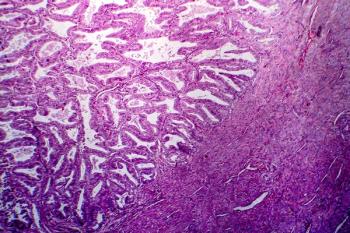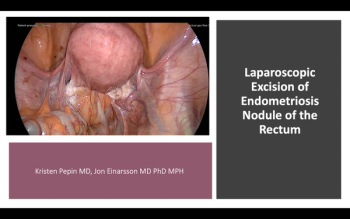
“Reaching these women is critical to reduce cervical cancer rates.”

“Reaching these women is critical to reduce cervical cancer rates.”

Pembrolizumab plus lenvatinib induced a statistically significant and clinically meaningful improvement in overall survival, progression-free survival, and objective response rate compared with chemotherapy in patients with advanced endometrial cancer after prior systemic therapy in the phase 3 KEYNOTE-775/Study 309 trial.

The study also found that early gender-affirming therapy vastly improves teens’ psychological well-being and body image.

Seven women’s health-focused organizations have formed the Alliance for Endometriosis to improve the lives of women afflicted with the disease.

Less than half of ob/gyns offer their patients the two most effective forms of emergency contraception -- ulipristal acetate and the copper intrauterine device (IUD) -- according to a national survey.

“Improved vision, laparoscopy and endoscopic surgery were made possible by an image revolution,” said Michel Canis, MD, PhD, an ob/gyn from Clermont-Ferrand, France, who chaired the panel.

This week's poll focuses on vaginal dilation for treatment of various sexual concerns.

Massive intraoperative blood loss (MIBL) is strongly and independently linked to postoperative febrile morbidity following gynecologic laparotomy, according to a retrospective cohort study in the Journal of Obstetrics and Gynaecology Canada (JOGC).

An adolescent patient's right to privacy is crucial, especially for ob/gyns.

"These results may have a direct impact on health care delivery if used to develop screening for women at higher risk and to prepare providers to treat women suffering from PFD," researchers said.

Could you recognize this rare condition?

A new study in Pediatrics investigated whether there was a relationship between age of presentation for gender-affirming medical care and mental health problems.

Women with high-grade cervical dysplasia are much less likely to have recurrence after primary conization if they undergo laser conization than a loop electrosurgical excision procedure (LEEP), according to a 5-year follow-up study.

A new study by French investigators shows that adenomyosis confined to the outer myometrium is associated with primary infertility—but not more diffuse disease.

Halley Crissman, MD, MPH, and Daphna Stroumsa, MD, MPH, MSC, discuss ways in which ob/gyns can provide high-quality care for transgender and nonbinary people assigned female sex at birth.

Although myomectomy may prolong the operative time and the postoperative hospital stay, there are numerous potential benefits including avoiding a follow-up operation to remove uterine fibroids.

For the literature review, the authors searched PubMed, ScienceDirect and Embase for English language articles on drug resistance, with 58 articles for inclusion.

High-intensity focused ultrasound (HIFU) for the treatment of uterine fibroids may not significantly increase the risk of pelvic adhesions.

The authors reviewed studies with primary outcomes that were factors associated with unsuccessful pessary fitting and discontinuation in women with POP and 21 for final analysis.

A new study, published in JAMA Network Open, investigated the efficacy of the Healthy Choices intervention when delivered in HIV clinics and remotely.

Self-catheterization for over 1 month occurred in 13.6% of surgical cases, mainly after segmental colorectal resection.

Considerable heterogeneity exists in reported outcomes and measures used in clinical trials of treatments for genitourinary syndrome of menopause (GSM), which impacts between 40% and 60% of postmenopausal women, according to a systematic review in the journal Menopause.

A new technique for repair of pelvic organ prolapse (POP) appears to be associated with good short-term outcomes, based on results of a new pilot study.

Halley Crissman, MD, MPH, shares her insight on the ways in which hospital systems reinforce cisnormativity and focal points to address for a more welcoming environment.

Presented by Kristen Pepin, MD, and Jon I. Einarsson, MD, PhD, MPH Brigham and Women’s Hospital, Boston